- Our History
- The History of Neurology and Timeline
- Timeline
- Horatio C. Wood, Chair
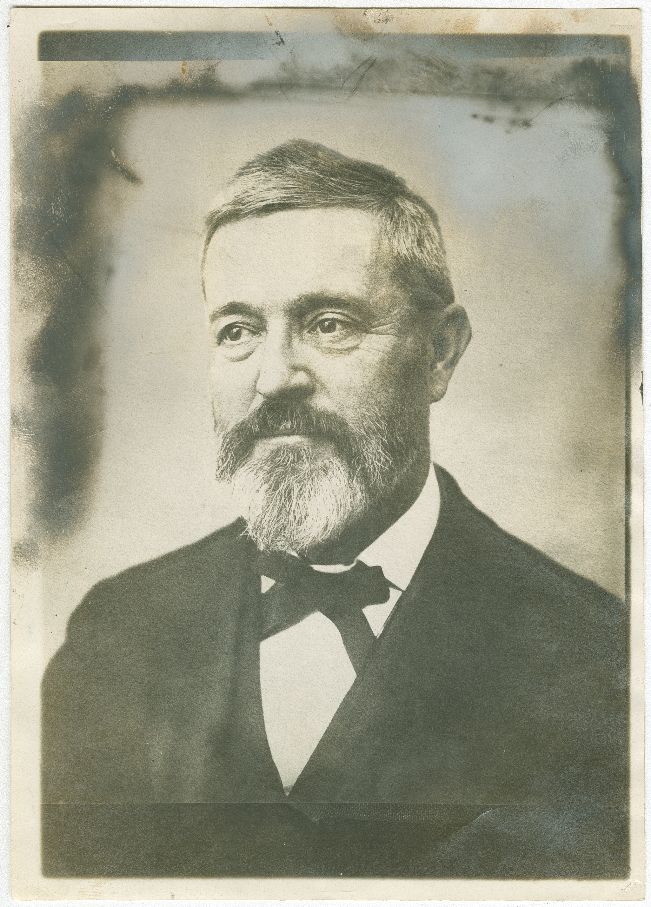
Prominent People of this Era
click on above name to review summary
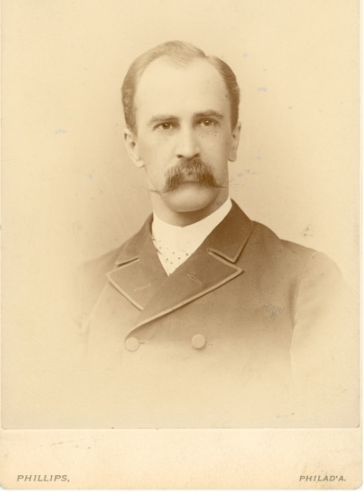
Silas Weir Mitchell (1829-1914)
click on above name to review summary
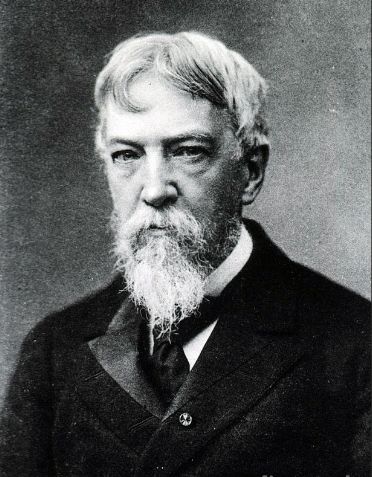
Horatio C. Wood, Chair, 1871 — 1900
First Professor and Chair of Neurology
b. Philadelphia, Pennsylvania, 13 January 1841; d. Philadelphia, 3 January 1920
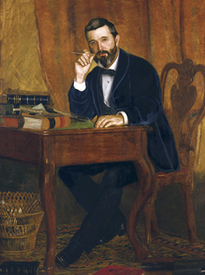
Horatio C Wood served as the first Clinical Professor and Chair of Nervous Diseases at the University of Pennsylvania from 1874 until 1901, but like other neurologists of his day, his expertise and influence extended far beyond neurology, and he may be best remembered for his contributions to anesthesia and pharmacology. The son of Philadelphia businessman, Horatio Curtis Wood, and Elizabeth Bacon Wood, both descendants of 17th-century English Quaker immigrants, Dr. Wood’s interest in the natural sciences and medicine began in his teen years through the influence of his uncle, George B. Wood, a physician in Philadelphia, and exposure to the Academy of Natural Sciences. He graduated with his medical degree from the University of Pennsylvania in 1862, and published his first paper at the age of 19, entitled “Contributions to the Carboniferous Flora of the United States”. He then completed residencies at Pennsylvania Hospital (1863) and the Philadelphia General Hospital (Blockley), after which he served in the Civil War as a surgeon in the Union Army in Virginia.
On his return, he first became a private teacher in the medical department at the University of Pennsylvania, specializing in Materia Medica and Therapeutics. His uncle, George B. Wood, a professor at the School of Medicine since 1935, felt medical training had become too practical and restricted, resembling a trade school. He advocated for the broadening of the curriculum, and ultimately won the support of the faculty and trustees to fund an Auxiliary Faculty of the Natural Sciences, of which Dr. Wood was appointed Professor of Botany, a position he held for 10 years starting in 1866. During this time, Dr. Wood published papers on freshwater algae, myriapods, and the medical properties of the marijuana plant, resulting from experimentation on himself. His “Fresh Water Algae of North America”, including 19 colored plates and 360 original microscopic drawings, was published in the Smithsonian Transactions in 1872. He received a prize from the American Philosophical Society for his research on American Hemp. He traveled to the Bahamas, Texas, and Mexico to collect samples of flora and fauna for the Smithsonian Institution.
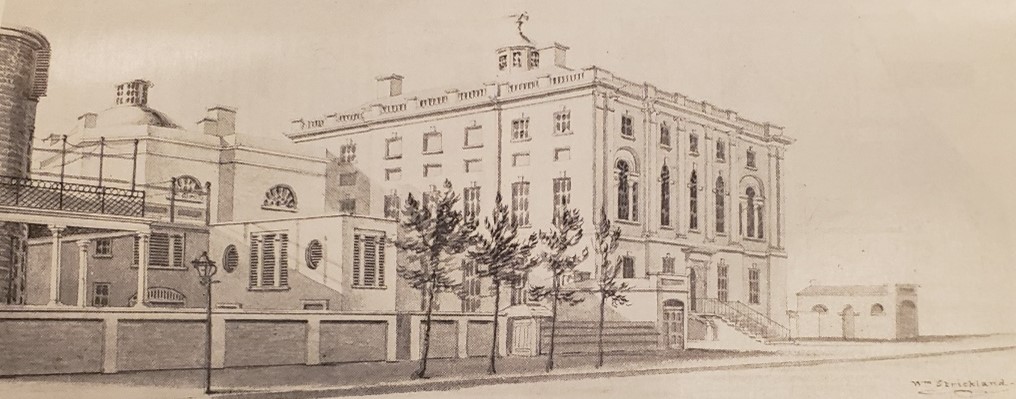
Over the ensuing 10 years his focus shifted from botany and entomology to medicine. In 1871 he was named Lecturer of Nervous Diseases, the first to hold this position at the University, effectively establishing the first Department of Neurology in Philadelphia. He initially saw outpatients at the Old Medical Hall at 9th and Chestnut, with Dr. Morris Longstreth as his chief of clinic; when the decision was made to leave this site, his practice moved temporarily to Philadelphia Medical College on 9th and Locust, with Dr. Louis Starr as chief of clinic, before moving to the new West Philadelphia campus in 1874. He became a Clinical Professor of Nervous Diseases in 1874, and held this position for 27 years.
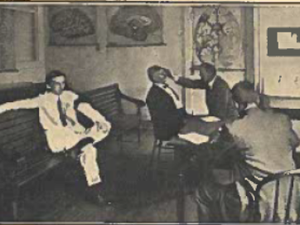
His publications during this time regarding neurologic topics included “Thermic Fever, or Sunstroke”, which earned him the Boylston Prize of 1872; “Nervous Diseases and their Diagnosis” in 1874; “Brain Work and Overwork” in 1880; and “Syphilis of the Nervous System” in 1889. In 1876, he was also named Professor and Chair of Materia Medica, Pharmacy, and Therapeutics, after Joseph Carson was incapacitated by illness. He served on the medical staff of Philadelphia Hospital from 1870 to 1883, and the neurological staff from 1883 to 1888. He had a specific interest in experimental therapeutics and was a pioneer in animal experimentation. He advocated for “rational medicine”, guided by knowledge of pathophysiology and therapeutic effects directly observed in animals, rather than the more popular “empirical medicine” approach, in his A treatise on therapeutics comprising materia medica and toxicology, with especial reference to the application of the physiological action of drugs to clinical medicine. This groundbreaking volume was initially published in 1874, with 13 subsequent editions being published over the next 30 years.
Dr. Wood played pivotal roles in several transformative movements at Penn over the course of his tenure. In 1874, just after the University had moved from its prior location on 9th street, near Pennsylvania Hospital, to 36th and Locust, he, William Pepper and William F. Norris felt that the existing hospitals in the city were either too far from the University or otherwise insufficient for instruction. Together they secured funding to build the Hospital of the University of Pennsylvania, making the University the first to have its own hospital. In 1875, after witnessing the loss of a patient due to ineptitude of the provider, he wrote an article decrying the poor state of medical education in the United States, and outlining the reforms necessary, including lengthening the course of schooling and gradually escalating the curriculum from pre-clinical to clinical courses over 3 years. The obstacles to these reforms were primarily financial; with endowments these changes were ultimately adopted, and the course was extended to 4 years in 1892, with 2 pre-clinical years and 2 clinical years, a structure that endured for 75 years. In 1902 Dr. Wood unsuccessfully advocated for a 5-year course. In 1884, he traveled to Montreal to gather information about Dr. William Osler; he was so impressed by what he learned that he fiercely advocated for his recruitment, and was instrumental in his hiring.
He held several editorial positions, including of New Remedies, the Philadelphia Medical Times, the Therapeutic Gazette, the British Manual of Materia Medica and Therapeutics, and the United States Dispensary. His investigations on fever led to a publication by the Smithsonian Institute in 1880. He published results regarding chloroform, ether, ethyl chloride, ethyl bromide, nitrous oxide, and other anesthetics, and was invited to speak on this topic at the International Medical Congress in Berlin, likely playing a large role in the adoption of ether and the rejection of chloroform as an anesthetic globally. He was the recipient of the Warren prize and an award from the Philosophical Society of Philadelphia. From 1890-1910, he served as the president of the US Pharmacopeia Convention, informing the publication of The Pharmacopeia of the United States. He served as president of the College of Physicians in 1902 and 1903, and of the Neurological Society in 1883. He was appointed by Secretary of State Hay to represent the United States at the International Convention for the Unification of Heroic Medicines in Brussels, a meeting called to determine standards regarding the dosages of more powerful drugs.
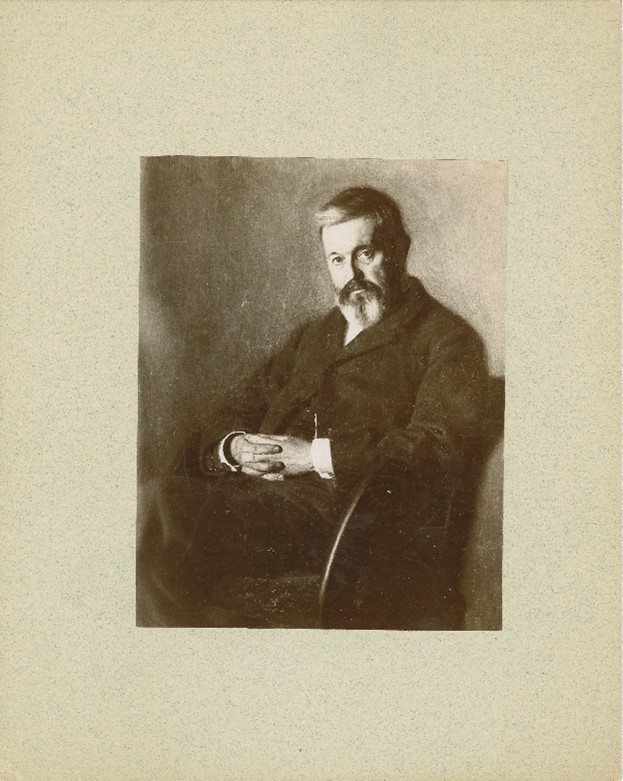
By many accounts, in addition to being an exceptionally astute clinician, Dr. Wood was an energetic, dynamic, and compelling character, at times even provocative or incisive. A pupil of his stated he was “vastly popular with the students, and a magnificent figure of a man who could instruct and entertain at the same time.” Henry Beates, Jr, recalled that he would work fervently for 30 consecutive hours, sleep for 12-18 hours, and rise to work again. In 1903, in response to a controversial speech by surgeon Dr. John B. Deaver impugning internists for failing to refer patients with appendicitis for surgery early enough, Dr. Wood was quoted in a newspaper as saying “While I don’t think the newspapers are the proper place for such discussions, I will say that appendicitis was discovered and treated by physicians before Dr. Deaver ever heard of it.” He gave lectures during the Russo-Japanese War of 1904-1905, covered by local newspapers, in which he argued the Japanese would win based his personal experience with Japanese people abroad, and their willingness to use suicide bombing. David Riesman wrote of him on his death in 1920: “His lectures on the same subject year after year were events in student life… Dogmatic he was – none more so – and for that reason the students were… his blind disciples. … He possessed in an unusual degree the power of epigrammatic statement and many of his sayings, such as his classification of liars – liars, damn liars, and experts – will live forever.” His lectures on the nervous system were “especially noteworthy for his deep insight, in which he was in advance of his time, into the subject of syphilis of the nervous system. … What were to others exceedingly difficult problems he seemed to solve by intuition. … He had a great power over the students, who would accept things from him without resentment that would have called forth bitter hatred against any other man. … Wood was the last member of a group that in its day was the greatest medical faculty in this country.”
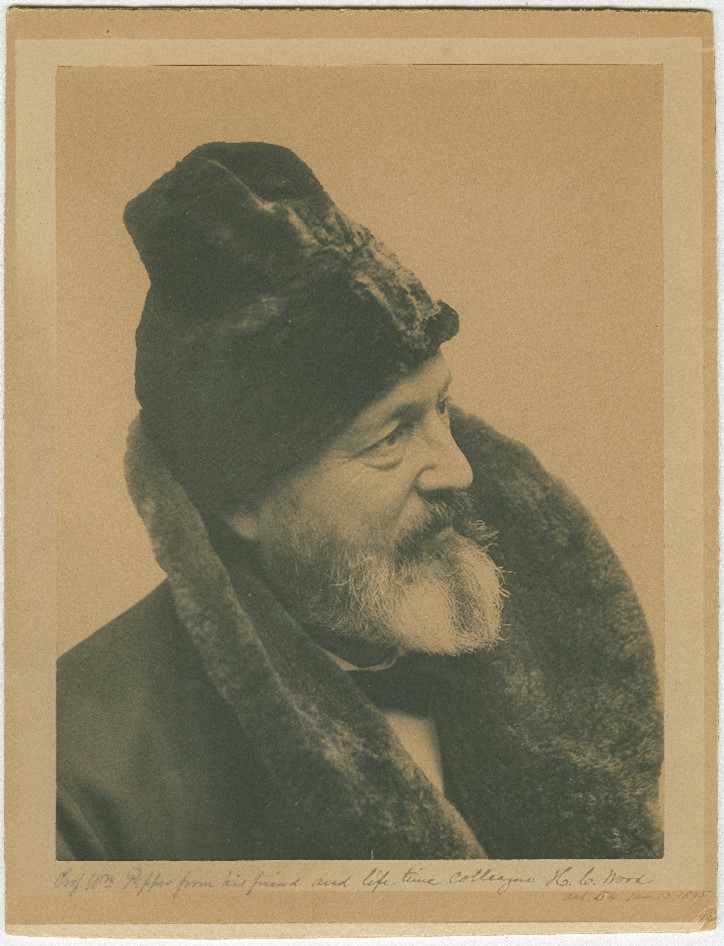
Dr. Wood encouraged his students to cultivate altruism, lecturing on how this attribute distinguishes man in Roman times from man now. He secured the funding necessary for the erection of a new Settlement House associated with the Christian Association at Penn, used for housing settlement workers and conducting religious services, classes, work, and recreational activities for the local neighborhood children.
He received LL.D. degrees from Lafayette College, Yale, and the University of Pennsylvania. He married Elizabeth Longacre in 1866, with whom he had three sons and a daughter. His health began to fail in 1901, described as “nervous prostration”, and he sought the care of Dr. Francis Dercum. At that time Charles K Mills was appointed Clinical Professor of Nervous Diseases; he was subsequently elevated to chair in 1903. Dr. Wood resigned and became emeritus professor in 1907. He died at the age of 78 in Philadelphia of pneumonia.
References and Sources:
Mills, Charles K, MD. “A History of the Department of Neurology of the Medical School of the University of Pennsylvania.” Old Penn: Weekly Review of the University of Pennsylvania. June 10 1911.
Schulman, Melanie B. The University of Pennsylvania and the Development of Neurology in Philadelphia.
"Wood, Horatio C." Complete Dictionary of Scientific Biography, vol. 14, Charles Scribner's Sons, 2008, pp. 495-497. Gale In Context: U.S. History, link.gale.com/apps/doc/CX2830904717/UHIC?u=upenn_main&sid=summon&xid=81c15158. Accessed 17 Jan. 2022.
Southgate MT. Dr Horatio C. Wood. JAMA. 2005;293(23):2836. doi:10.1001/jama.293.23.2836
Swann, J. Wood, Horatio C, Jr. (1841-1920), physician, educator, and editor. American National Biography. Retrieved 17 Jan. 2022, from https://www.anb.org/view/10.1093/anb/9780198606697.001.0001/anb-9780198606697-e-1200998.
BEATES, H. (1920). HORATIO C. WOOD, M.D: AN APPRECIATION. Medical Record (1866-1922), 98(10), 393. Retrieved from https://proxy.library.upenn.edu/login?url=https://www.proquest.com/scholarly-journals/horatio-c-wood-m-d/docview/89017502/se-2?accountid=14707
“Horatio C. Wood.” Science, vol. 51, no. 1309, American Association for the Advancement of Science, 1920, pp. 106–07, http://www.jstor.org/stable/1644677.
Obituary: HORATIO C WOOD. (1920). Medical Record (1866-1922), 97(2), 75. Retrieved from https://proxy.library.upenn.edu/login?url=https://www.proquest.com/scholarly-journals/obituary/docview/89012965/se-2?accountid=14707
"Horatio Charles Wood." Dictionary of American Biography, Charles Scribner's Sons, 1936. Gale In Context: Biography, link.gale.com/apps/doc/BT2310000313/BIC?u=upenn_main&sid=summon&xid=a8c29d5e. Accessed 17 Jan. 2022.
Corner, George W. Two Centuries of Medicine. JB Lippincott Co, US, 1965.
From the Archives:
The Alumni Register
The Scope
Major Discoveries and Events at Penn during this time
- 1874: Hospital of the University of Pennsylvania opens
- 1875: ANA is founded by William Hammond and S. Weir Mitchell
- 1876: Louis Duhring co-founds the American Dermatological Society
- 1878: first issue of Brain is published, founded by John Hughlings Jackson, David Ferrier, and Sir James Crichton-Browne
- 1881: Wharton Business School - the world’s first collegiate business school created
- 1882: Nathan Francis Mossell becomes first African-American man to graduate from Penn School of Medicine
- 1887: Dissection becomes a mandatory part of curriculum
- 1887: Miles Tucker became the first African American to graduate from the Wharton School, earning a Ph.B.
- 1889: Thomas Eakins paints The Agnew Clinic, depicting Professor D. Hayes Agnew using a gown for antisepsis
- 1890: The first X-Ray picture is taken by Professor Arthur W. Goodspeed of Physics and photographer William N. Jennings
- 1892: The Wistar Institute of Anatomy and Biology is founded, beginning a partnership with Penn that united medical education and research
- 1897: The nation’s first Department of Radiology is founded at HUP, then called the Division of Roentgenology Services
- 1897: The nation’s first Department of Rehabilitation Services is founded at HUP
Major Translational Research, Clinical Advances, and Neurology First of this era
- 1870: Instantiation of the first neurology department in the USA at the university of Pennsylvania
- 1870s: John Hughlings Jackson determines the organization of motor cortex from the progression of seizures, describes the Jacksonian March, and describes the psychomotor features of temporal lobe seizures
- 1874: Carl Wernicke describes sensory aphasia, distinct from motor aphasia described previously by Paul Pierre Broca
- 1875: Richard Caton uses a galvanometer to record electrical signals from surfaces of living brains in rabbits, monkeys, and dogs
- 1878: Hermann Munk localizes vision to occipital cortex in dogs and monkeys
- 1878: the number of patients in the nervous wards of the Philadelphia Hospital was 35
- 1881: David Ferrier localizes auditory function to superior temporal gyrus
- 1881: Carl Wernicke describes Wernicke encephalopathy
- 1883-1884: The first to hold the official title of instructor in nervous diseases in the neurological department was Dr. Francis X. Dercum.
- 1887: Santiago Ramon y Cajal starts using silver staining, developed by Camillo Golgi in 1873, on neurons, and report that the nervous system is made up of discrete cells, dubbed the “neuron doctrine”
- 1888: Charles Mills delineates how motor and sensory areas in the brain were distinct and used electrical stimulation to help localize functions of specific regions in the brain.
- 1894, when a considerable change was made in the arrangements for the dispensary services, three large rooms about the middle of the wing were set aside for the nervous dispensary, the door of entrance being now placed on the west side. These rooms were subdivided so as to make five in all.
- 1899: Francis Gotch describes the refractory phase between nerve impulses
- 1901: Neurologist William Spiller and neurosurgeon Charles H. Frazier publish on the division of the sensory root of the trigeminus for trigeminal neuralgia (then tic doloreaux)
People of this era
- 1874-1883: Charles K Mills – Chief of Clinic, when became Professor William Spiller
- 1883-1893: F.X. Dercum – chief of clinic
- 1892-1907: Charles S Potts – chief of clinic
- 1871-1873: Dr. Morris Longstreth as a chief assistant or chief of clinic.
- 1873-1874: Dr. Louis Starr was made chief of the clinic and continued in this position.
- 1889-1890: Dr. James Hendrie Lloyd was made instructor in electrotherapeutics in the session of 1883-84, remaining in this position until the close of the session
- 1892-1893: Dr. Charles S. Potts. The position of Dr. Potts was expanded to that of instructor in electrotherapeutics and nervous diseases for the session of 1892-93, and he continued to hold this title until the close of the session of 1902-03.
